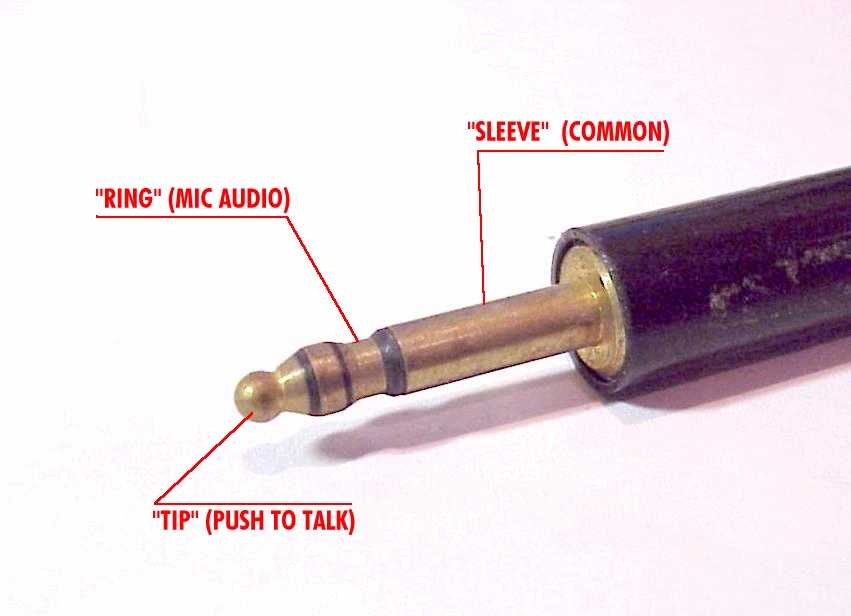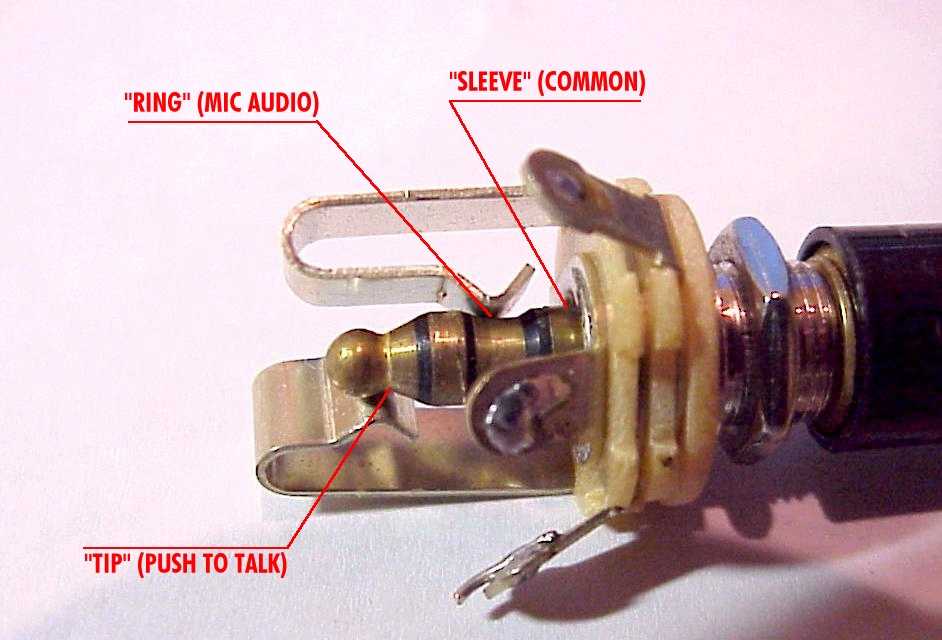

|
Bob's Shop Notes: |

|
The "business end" of a .205" microphone plug . . .History: This form of microphone connector has been around since World War II. The basic design for this style of connector has roots in the design for a plug and jack set used with headsets. The headset plug diameter was only a two circuit plug (sleeve and tip) and 0.25" in diameter. This headset plug design was in common usage in at least a couple of decades before the "microphone" plug came along. Actually, telephone companies developed the three-circuit plug and jack combination to accommodate designs for manually operated telephone switchboards. The first aircraft radios used carbon-granule microphones almost identical to microphones used on telephones. However, a second function was needed on the microphone in the form of a push-button to key the transmitter and effect a changeover from receive to talk . . . hence the name push-to-talk or PTT switch. Telephone companies not only had pretty rugged microphones, they could offer a nifty 3-circuit plug to go with it. To this day, the terms "tip", "ring" and "sleeve" coined by the telephone industry are used to identify the three circuits. The addition of a "ring" connection allowed us to craft a PTT microphone companion to the already common headset. Being smaller than a headset plug made it easy to avoid plugging the headset into the wrong jack and vise-versa. This particular plug is a mil-spec critter and appears to have yet another "ring" between the tip and ring connections I've noted . . . this may or may not be visible on your particular microphone plug . . . in this particular plug, it's simply a spacer to fill out the shape an maintain commonality with the dimensions of other style plugs.
|
A three circuit jack for the .205" plug . . .Here I have identified parts of the jack that make connection with the three circuits of the plug. I've also identified the solder terminals that correspond to each of the three circuits. |

|

|
When you stick them together . . .. . . they look like this. The manner in which the three circuits of the plug and jack come together can be seen in the adjacent photograph. . . . |
Here's an example of how the microphone jack is wired in an airplane . . .
|
|
Click here for larger image. I've posted part of the audio wiring for the Microcom 760VHF transceiver here to illustrate a typical microphone circuit. Note that the schematic symbol for the microphone jack makes a distinction about which wire connects furthest out on the plug (tip) and which wire is between the tip and sleeve (ring). This wiring convention is common to ALL microphones that use this style of connector. Note that this wiring diagram is very explicit about which wires are shielded (in this case, I use a shielded trio of wires that matches a product sold from our website) and how shields are terminated at each end.
|
 Click here to contact Bob at AeroElectric Connection Click here to contact Bob at AeroElectric Connection |